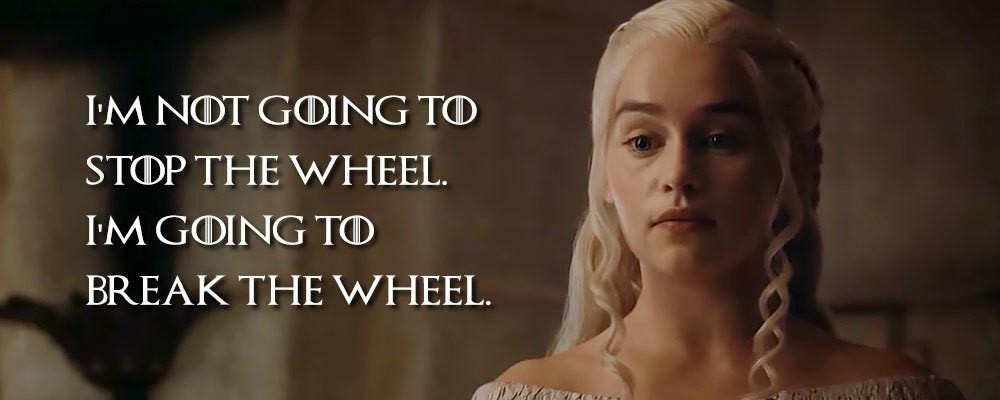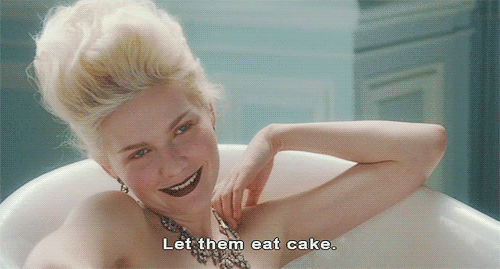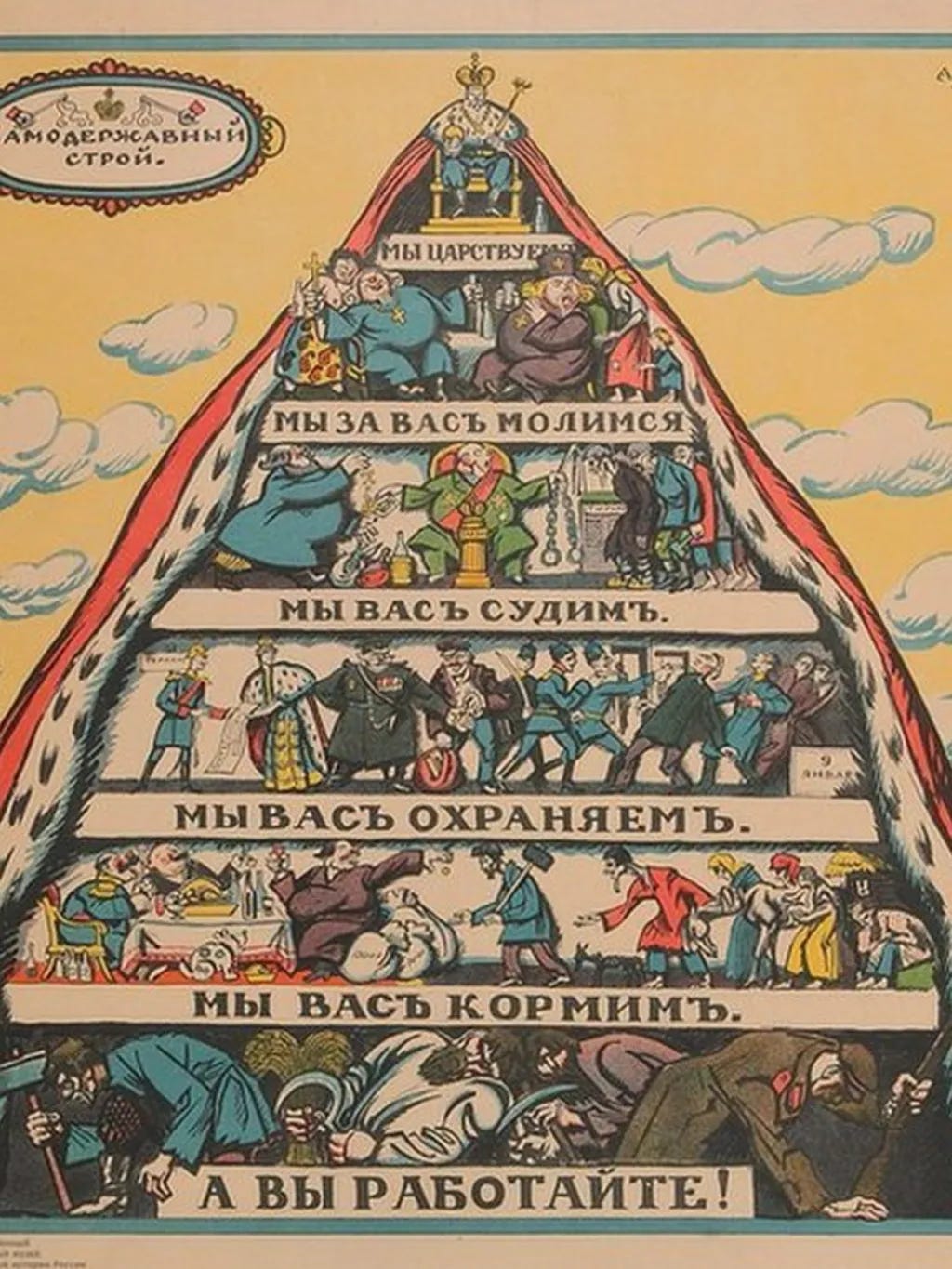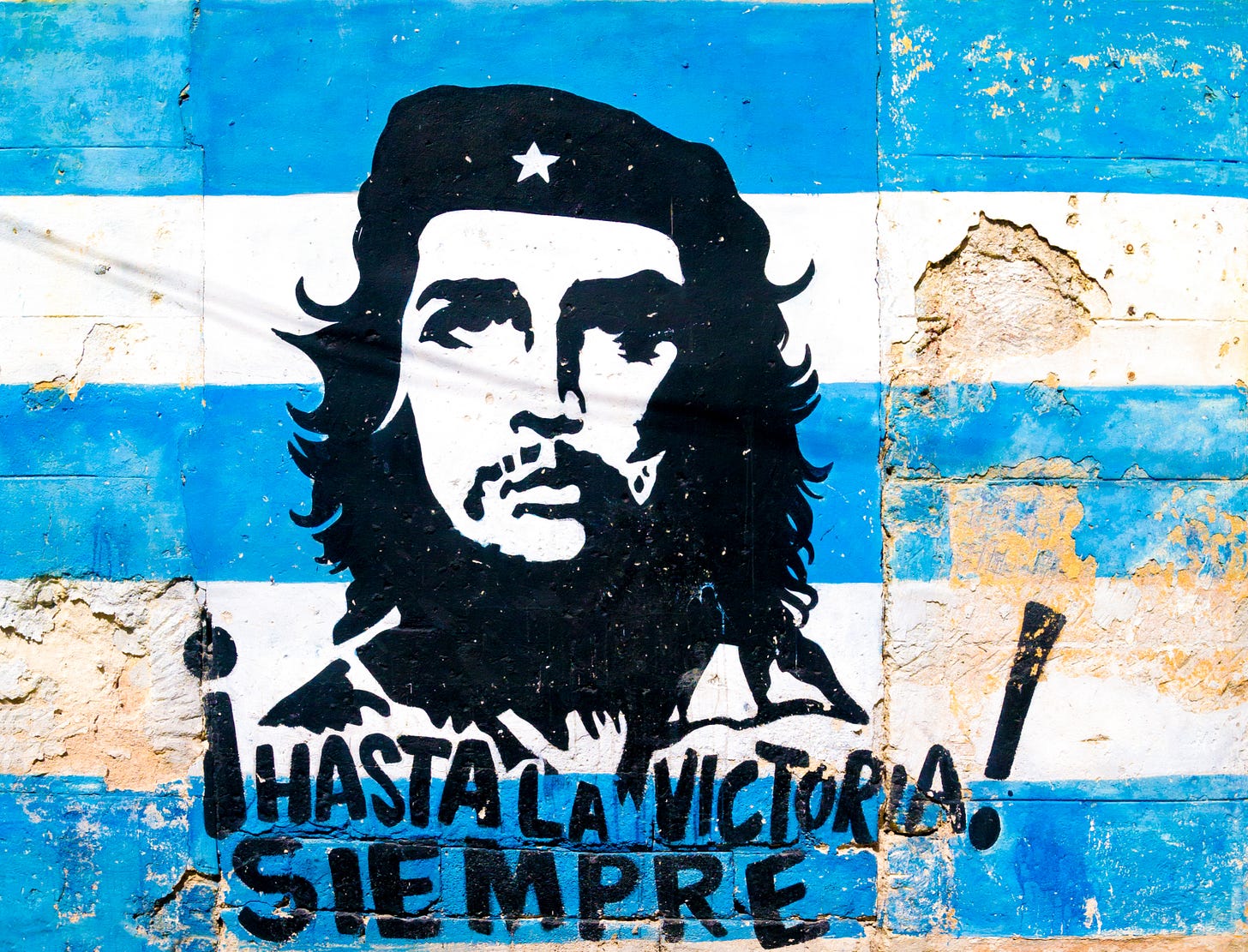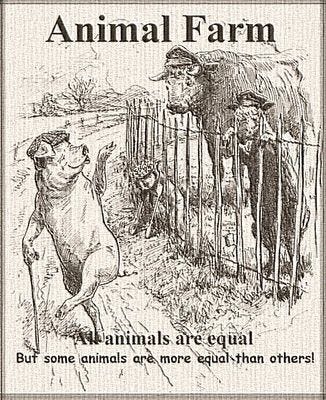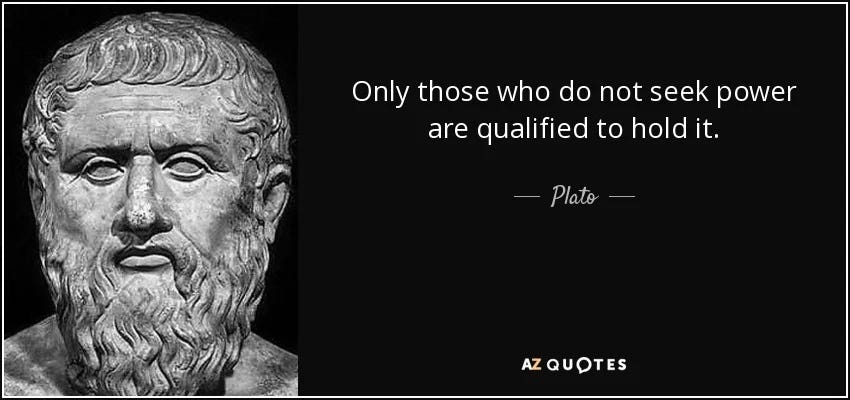Daenerys Targaryen – Game of Thrones -
Throughout history, art has served to mirror society, capturing and dramatizing the enduring struggle between the powerful and the powerless. From feudal hierarchies in period dramas to dystopian futures dominated by corporate overlords, these stories resonate because they draw from real-world economic and social disparities. Iconic works like Game of Thrones, Les Misérables, and Grapes of Wrath use fictional settings to explore themes of exploitation, insurrection, and the pursuit of social justice, highlighting the systemic forces that perpetuate inequality. By grounding their narratives in the dynamics of wealth, labor, and power, these art forms not only entertain but also provoke reflection on the historical and ongoing cycles of disparity that define human existence.
Power Dynamics and the Fight for Influence
The best example in recent years is HBOs Game of Thrones, which masterfully portrays the ongoing struggle between the powerful and the powerless, a theme that resonates deeply in both political and economic domains. The series highlights the ruthless tactics of power consolidation, with characters like Tywin Lannister and Cersei Lannister employing wealth and strategic alliances to dominate Westeros. Meanwhile, the disenfranchised - be it Jon Snow on the Wall, Arya Stark on her journey, or the oppressed peasants - face constant danger, illustrating the perilous position of those without money or influence. This dynamic mirrors real-world power struggles, where entrenched elites leverage systems to perpetuate their dominance, often at the expense of those outside the corridors of power.
The Cost of Power for the Powerless
The powerless in Game of Thrones typically bear the heaviest burden of the struggles for dominance. For instance, the common people suffer devastation during conflicts like the War of the Five Kings, echoing the real-world collateral damage experienced by vulnerable populations during geopolitical and economic upheavals. Yet, the powerless occasionally emerge on the scene to wreak havoc on their oppressors, as seen with Daenerys Targaryen liberating the enslaved or Jon Snow's efforts to unify disparate groups for collective survival. These moments of triumph highlight the potential for systemic change but also the fragility of such movements against entrenched powers.
In the end, the rich and powerful always end up on top. In the middle of Daenerys’ quest to retake the Iron Throne, she proclaims that the various Houses vying for power are like spokes on a wheel. One goes up and another one comes down. But the hungry and impoverished get crushed underneath the wheel no matter who’s at the top. Daenerys vows to “Break the Wheel”. Noble as this may be, the world has a way of humbling us all, and Daenerys was no exception.
Lessons on Economic Disparity and Power Dynamics
Game of Thrones reflects the never-ending struggle between economic elites and marginalized groups, illustrating how wealth disparity and power dynamics perpetuate inequality. From the Lannisters' golden coffers to the soul crushing poverty of Flea Bottom, the series echoes historical patterns where entrenched wealth enabled a small elite to dominate political and social systems at the expense of the powerless majority. Feudal Europe, which is the societal structure in which GOT is set offers a parallel, with landowning aristocracies extracting labor from serfs, while the elites reap the rewards. In both Westeros and our world, the consolidation of wealth has frequently widened economic gaps, with systemic changes arising only through upheaval, innovation, or collective resistance. The interplay between power and economic inequality reveals that shifts in fortune often come at great cost, underscoring the need to understand historical cycles in navigating the present.
Birth of MAGA
In a previous piece, we highlighted how economic disparity has fueled the creation and ascension of the MAGA movement. While on a cursory level, the origin of MAGA looks to be relatively recent, the roots go back several decades. They have their origin in the downfall of American unions, and the more liberalized free trade stance taken beginning with Ronald Reagan in the 1980s. Such policies set the stage for large scale offshoring of American jobs, and a significant loss of bargaining power for labor.
Since then, American workers, particularly factory and blue-collar workers have seen their wages trail higher income groups substantially. It’s often stated that lower income workers have lost purchasing power over the last few decades, but that isn’t quite true. However, by any measure, median real wage gains have been weak, with disparity rising between the highest paid, and the lowest paid. The 90th percentile has seen wages grow 50% in the last 50 years, and the 10th percentile has only seen 28% growth.
Of course, the above-mentioned change only pertains to income for laborers. The truly drastic discrepancy has been between the highest echelon (CEOs) and the average worker. In 1965, the typical CEO made 21x what the average worker made. In recent years, that ratio has exploded to almost 350x. Not coincidentally, this has coincided with a drastic increase in pricing power among the largest corporations, as gross margins have expanded significantly - particularly within Big Tech.
Breaking the Wheel Through History
Such disparities are a breeding ground for populist movements, and in some cases outright revolutions. In the vast majority of cases, the primary cause of a revolution is economics. Certainly, there are other factors that can come into play, such as social dynamics or religion, but it’s rare that economics does not play a part.
1. The French Revolution (1789–1799)
The French Revolution was primarily driven by severe economic inequality and fiscal crises. France's economy in the late 18th century was burdened by heavy taxation on the lower classes, while the nobility and clergy enjoyed significant tax exemptions (sound familiar?)). Compounding this imbalance, years of war and extravagant spending by the monarchy had left the government bankrupt. A series of poor harvests led to skyrocketing bread prices, further exacerbating the plight of the peasantry. The ubiquitous economic suffering ignited a call for systemic change, culminating in the overthrow of the monarchy, and a radical reimagining of French society. The revolution became a turning point in history, demonstrating how economic pressures could unravel even the most entrenched political systems.
Bolshevik propaganda depicting class structure prior to the Russian Revolution.
2. The Russian Revolution (1917)
Economic despair was a central cause of the Russian Revolution, with the inequities of industrial capitalism and agrarian stagnation pushing the lower classes toward rebellion. Under Tsar Nicholas II, Russia faced extreme economic imbalances, with a small elite controlling most of the wealth while peasants and industrial workers struggled under dire conditions. World War I magnified these problems, draining resources and leading to food shortages and inflation. As strikes and protests erupted across cities, the Bolsheviks capitalized on widespread anger, promising "peace, land, and bread" to the poor masses. The revolution not only toppled the Romanov dynasty but also ushered in the world's first Communist state, fundamentally altering global politics and economics.
“Until Victory Always” - Cuban Revolution
3. The Cuban Revolution (1953–1959)
The Cuban Revolution was largely driven by economic inequality under the regime of Fulgencio Batista. Cuba's economy in the mid-20th century was marked by stark disparities: urban elites and foreign corporations, especially in the sugar industry, prospered while rural populations lived in poverty. Widespread corruption and the dominance of foreign interests led to public disillusionment. Fidel Castro and his followers used the economic struggles of the rural poor to galvanize support, portraying their movement as a fight against imperialism and exploitation. The revolution resulted in a dramatic redistribution of wealth and land but also isolated Cuba economically, showcasing the far-reaching consequences of economic-driven uprisings.
Is it Freedom or Tyranny? (grass is always greener)
Among these historical events, there are significant differences. Russia and Cuba adopted Communism, a totalitarian form of government, while France overthrew a monarchy, ostensibly to move to a representative form of government. But in the turmoil of revolution, as is often the case, things didn’t go so smoothly. By 1798, France was under a dictatorship ruled by Napoleon Bonaparte.
The only real constant in these periods is that people wanted “change”. Unfortunately, when change is the only organizing principle, the particular type of change becomes somewhat arbitrary. Even when there is a majority calling for a certain type of government to take the place of the overthrown regime, there’s no guarantee it will turn out as expected. The succeeding government may be just as incompetent or corrupt as the preceding one, people may still go hungry, and social stratification will likely continue.
This brings us back to MAGA. To hear the average individual in the MAGA movement speak of what electing Donald Trump will do in office, it sounds like a revolution – both social and economic. No doubt its leaders think that way. For laughs, check out Why the MAGA movement is the 1776 revolution of our time. Never mind that most of the commentary, social media posts, and memes used to promote the MAGA worldview are based on nonsense. Right wing anger has been continually stoked by media figures some have dubbed “the right wing outrage machine”.
Trump supporters' anger stems from a variety of economic, cultural, and political grievances that have been amplified by changes in social norms and government spending priorities. Below are five key reasons MAGAs feel they are entitled to a revolution of sorts:
1. Economic Displacement
Many Trump supporters feel left behind by globalization, outsourcing, and the decline of manufacturing industries. The belief that economic policies favor urban and coastal areas has led to frustration among working-class voters, especially in rural and industrial regions. This economic disenfranchisement fosters resentment toward political elites who they believe are at best indifferent to their struggles.
2. Distrust of Institutions
Long-standing mistrust of government, media, and other institutions has been amplified in recent years. Supporters often view these entities as biased against their values and interests, believing they serve corporate or global elites instead of the average American. This distrust is reinforced by narratives of “fake news” and corruption within the political establishment.
3. Cultural Alienation
Rapid social changes—such as increased illegal immigration, shifting racial demographics, and progressive movements (“wokeness”) - have led some to feel alienated, and that their cultural identity is being pushed to extinction. “America First" mentality and Trump’s attacks on political correctness resonate with those who see these changes as undermining what they consider traditional values.
4. Perceived Political Marginalization
Trump supporters often feel dismissed or caricatured by mainstream politicians and media as "deplorables" or extremists. This perception fuels anger and a desire for representation that validates their concerns. They view Trump as a voice for the "forgotten" majority who challenges entrenched political systems.
5. Backlash Against Globalization and Elitism
Many see Trump's opposition to free trade agreements, his focus on national sovereignty, and his critique of international organizations as addressing their fears about globalization. They believe global elites prioritize foreign nations and multinational corporations over the well-being of American workers and communities.
These grievances are deeply interwoven, reflecting a broader sense of disenfranchisement and a desire for political and social regression. My personal view is that Donald Trump couldn’t care less about all these things, but he knows how to magnify the grievances of the masses for his own gain, and he has done that masterfully. I see him as an empty vessel, an avatar that embodies the anger of MAGA. Over the past eight years, no presidential candidate has fit the outsider mold like he has. MAGA voters identify with that. To be clear though, it’s difficult to see any of his policies actually helping his base voter. But there is an extremely wide range of potential policies that may get enacted under Trump, and the time frame of implementation will play a part too. So, we shall see.
MAGA is NOT Breaking the Wheel
In fairness, no one ever has. Not really. There always has been, and there always will be a ruling class of some sort. It may be organized by proclamations of divine right, heritage, inherited money, brute force, or intelligence. Regardless, those at the top believe themselves better than those below, and with that belief, they feel entitled to a better life than the average citizen. Since government work usually doesn’t pay that well, the temptation among leadership for corruption is high. The more powerful the leadership, the more extreme the corruption. Vladimir Putin, the present leader of Russia, is believed to be one of the richest people in the world. Every bit of that was stolen from his countrymen.
The bottom line is this – the reason there is no perfect system of government is because there are no perfect people. As a general rule, the ones most inclined to seek power (or steal it!) are not good people who want to lift up their subjects. The more power at stake, the more evil people will seek it.
Game of Thrones: Spoiler Alert
In the beginning season of Game of Thrones, we are introduced to Daenerys Targaryen, a young woman who was forced to flee Westeros along with her brother when her father, King Aerys II, was killed during “Robert’s Rebellion”, and the Iron Throne was lost. Those still loyal to her father kept them in hiding for years in Essos.
From the very beginning, Daenerys gives the impression of a person who is pure of heart. But over time, she becomes hardened. She is treated horribly by her brother Viserys, and sold to the leader of the Dothraki, Khal Drogo, as his wife. Khal Drogo killed her brother after he saw him mistreating Daenerys and later died in battle.
All she had left were three dragon eggs (dragons were extinct) that had belonged to her family. She walked into Drogo’s funeral pyre with the eggs, and in the morning emerged unburnt, and with three baby dragons. Then over several years, as her dragons become full grown, she amasses armies, followers, ships, and everything she needs to take back the Iron Throne. Along the way, her advisor Tyrian Lannister must check her worst instincts by preaching diplomacy over fire and destruction. But we can see Daenerys change as her power grows. Tyrian’s diplomatic strategies continually fail, and the benevolent princess starts to thirst for the power
Daenerys suffered several great personal tragedies on her way to claiming the iron throne. When Khal Drogo died in battle, she had grown to love him, and was heartbroken. She lost two of her three beloved dragons in battle. Her two favorite and loyal subjects, Jorah and Missandei died, with Missandei having her throat cut by Cersei as Daenerys watched. In the end, when her armies had entered King’s Landing, and Cersei had surrendered, the feelings of loss overwhelmed her. Rather than feeling joy at finally winning the iron throne, she is filled with despair and anger at all she had lost. The war had been won, but Daenerys wasn’t satisfied. Looking down on the people she intended to “liberate”, she decides to burn all of King’s Landing while her top advisors watch in horror.
In case it’s not obvious, the point of revisiting this tale is to show that even the best among us aren’t immune to the trappings of power. Daenerys had the best of intentions in the beginning, but over time those intentions were corrupted by a growing desire to sit on the Iron Throne. There are no benevolent dictators.
Checks and Balances
Unfortunately, there is often no need for leaders to be corrupted over time. Many start out that way. In fact, those who desire to rule over people most are the people most likely to abuse it. When good people pursue power, they do it because they feel it is their civic duty.
The American founders knew this. They were quite wary of demagogues that could use a period of political chaos to launch a bid for power to meet their own ambitions, rather than what was best for the people. This is the reason we have three branches of government, and numerous “checks and balances”. If you were going to have a “government by the people, and for the people” responsibility needs to be spread far and wide. George Washington knew he could hold the presidency for life if he wanted, but he refused to run for a third term, so as to not set such a precedent. He felt that would make it more likely for the country to slip back toward a monarchy, or some other authoritarian structure. It’s hard to see the incoming president doing something like that.
Huge Policy Uncertainty
We’ve all heard the wild campaign promises Donald Trump made in the last year concerning economic policy. Massive tariffs to bully trading partners into giving trade concessions. Corporate tax cuts to spur growth and incentivize onshoring new manufacturing. Much of it sounds good to his base, but there is a ton of risk in the severity of policy changes. There’s been a lot of bluster, but we don’t actually know yet what will be implemented.
I’ll be analyzing his potential economic policies in the coming weeks. One thing I feel quite sure about is that the majority of the policies proposed are unlikely to improve the situation of his most ardent supporters. If I’m right, it will be interesting to see how they respond to the prospect of continuing to get crushed under the wheel.




